Related Research Articles

Eileen Chang (traditional Chinese: 張愛玲; simplified Chinese: 张爱玲; pinyin: Zhāng Àilíng; Wade–Giles: Chang1 Ai4-ling2;September 30, 1920 – September 8, 1995), also known as Chang Ai-ling or Zhang Ailing, or by her pen name Liang Jing (梁京), was a Chinese-born American essayist, novelist, and screenwriter. She is a well-known feminist in Chinese history, known for portraying life in the 1940s Shanghai and Hong Kong.

The Atayal, also known as the Tayal and the Tayan, are a Taiwanese indigenous people. The Atayal people number around 90,000, approximately 15.9% of Taiwan's total indigenous population, making them the third-largest indigenous group. The preferred endonym is "Tayal", although the Taiwanese government officially recognizes them as "Atayal".
Taiwanese literature refers to the literature written by Taiwanese in any language ever used in Taiwan, including Japanese, Taiwanese Han and Austronesian languages.
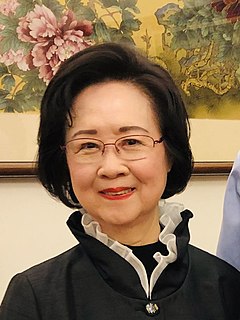
Chiung Yao or Qiong Yao is the pen name of Chen Che, a Taiwanese writer and producer who is often regarded as the most popular romance novelist in the Chinese-speaking world. Her novels have been adapted into more than 100 films and TV dramas.
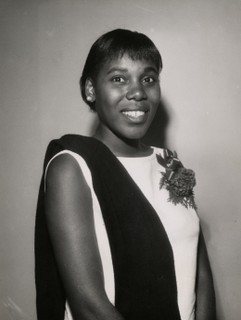
Paule Marshall was an American writer, best known for her 1959 debut novel Brown Girl, Brownstones. In 1992, at the age of 63, Marshall was awarded a MacArthur Fellowship grant.
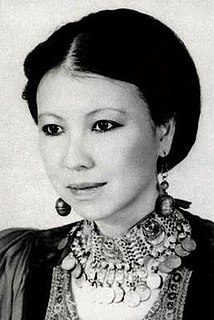
Sanmao was the pen name of Echo Chen Ping, a Chinese writer and translator based in Taiwan. Her works range from autobiographical writing, travel writing and reflective novels, to translations of Spanish-language comic strips. She studied philosophy and taught German before becoming a career writer. Her pen name was adopted from the main character of Zhang Leping's most famous work, Sanmao. In English, she was also known as Echo or Echo Chan, the first name she used in Latin script, after the eponymous Greek nymph. Since young, she was said to have avoided writing the character "Mao" (懋) as she never mastered the ability to do so, which later in life, she legally changed her name to Chen Ping.

The island of Taiwan, together with the Penghu Islands, became a dependency of Japan in 1895, when the Qing dynasty ceded Taiwan Prefecture in the Treaty of Shimonoseki after the Japanese victory in the First Sino-Japanese War. The short-lived Republic of Formosa resistance movement was suppressed by Japanese troops and quickly defeated in the Capitulation of Tainan, ending organized resistance to Japanese occupation and inaugurating five decades of Japanese rule over Taiwan. Its administrative capital was in Taihoku (Taipei) led by the Governor-General of Taiwan.
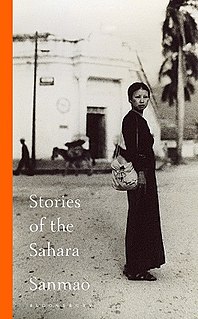
Stories of the Sahara is an autobiographical account of the life and love of the Taiwanese author Sanmao while she was living in the Sahara Desert with her Spanish husband Jose Maria Quero y Ruiz. It was first published in book form in 1976, although some of the earlier stories were published in Taiwan's United Daily News as early as 1974.
Taste of Apples is the name of an English language translation of collected short stories of the Taiwanese writer Huang Chunming. The translation is by Howard Goldblatt and was published in 2001 by Columbia University Press.
Hualing Nieh Engle, née Nieh Hua-ling, is a Chinese novelist, fiction writer, and poet. She is a professor emerita at the University of Iowa.
Liu Huang A-tao was a Taiwanese activist. She was one of thousands of women from Japanese occupied Taiwan who were forced into sexual slavery as comfort women by the Japanese military during World War II. Liu Huang became the first Taiwanese woman to sue the Japanese government for compensation and a public apology in 1999, a move which united her with eight other comfort women survivors. Her public campaign and push for compensation earned her the nickname Grandma A-tao.
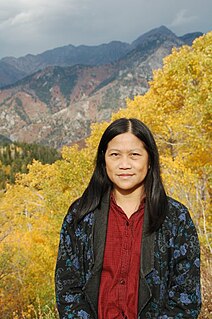
Huang Yu-shan is a Taiwanese filmmaker. She has made significant contributions to Chinese cinema in the areas of aesthetics and cultural history. Her focus is the woman's viewpoint, and frequently challenges the status quo in what has been a male-dominated society.
Huang Ching-cheng was a Taiwanese sculptor. He is counted among the important pioneers of Taiwanese modern art. Lai Hsien-tsung mentions him in one breath with Ju Ming. Huang's sculpture "Study of a Head" was the first modern work of art in Taiwan that was declared a part of the island's cultural heritage that is protected by a new law passed in 2009. It is exhibited in the Kaohsiung Museum of Fine Arts.
Taiwan nativist literature. Xiangtu (鄉土), literally meaning the hometown soil, symbolizes nativism; and Wenxue (文學) is literature. It is a genre of Taiwanese literature derived from the New Literature Movement (台灣新文學運動) under the Japanese rule in the 1920s. The movement died down after 1937 when the Japanese government strengthened its colonial policy, but regained public attention in the 1970s. Taiwan nativist literature uses literary realism as its main narrative to depict people, events and subjects that happen in Taiwan, aiming at reflecting the particularity of the local society. The nativist novels usually depict the struggles for existence and predicaments of identity of the Taiwanese people with a humanistic tone. They tend to base on the life experiences of their authors, and reflect their worldviews.
The Columbia Anthology of Modern Chinese Literature is a 1995 anthology of Chinese literature edited by Joseph S. M. Lau and Howard Goldblatt and published by Columbia University. Its intended use is to be a textbook.

Kang-i Sun Chang, is a Chinese-born American sinologist. She is a scholar of classical Chinese literature. She is the inaugural Malcolm G. Chace Professor, and former chair of the Department of East Asian Languages and Literatures at Yale University.
Fangge Dupan was a Taiwanese poet. Born to a prestigious Hakka family in Xinpu, Hsinchu, she began writing as a teenager in high school. Most of her early work is written in Japanese because she was educated in that language. Due to political pressure, she stopped writing in Japanese and did not publish until the 1960s, in Mandarin. In the late 1980s, Fangge Dupan turned to her native Hakka language.
Liang Baibo was a Chinese manhua artist and painter, best known for her short-lived comic strip, Miss Bee, published in 1935. She and Yu Feng were China's first female cartoonists. Born in Shanghai, she worked in Singapore and the Philippines, and was a member of the avant-garde Storm Society. She had a three-year extramarital relationship with the artist Ye Qianyu, but left him to marry an air force pilot. She moved to Taiwan after the Chinese Communist Revolution, and later died by suicide.
Yang Qianhe (楊千鶴) (1921–2011) was a Taiwanese journalist, and considered Taiwan's first woman journalist.

Huang Bamei, also known as Huang P’ei-mei or Huang P'emei, was a Chinese pirate leader who served as a naval commander in the Second Sino-Japanese War (1937–1945) and the second phase of the Chinese Civil War (1945–1949), aligned with the Republic of China but at times of dubious allegiance. At the height of her power she commanded a force of 50,000 people and 70 ships and was considered the most famous pirate in China. She earnt the nickname "Two Guns" owing to her use of two guns in battle.
References
- 1 2 3 Sokolsky, Anne (2010). "Yang Qianhe and Huang Fengzi: Two Voices of Colonial Taiwan". Japan Studies Association Journal. 8: 239–266. ISSN 1530-3527.
- ↑ "Foreword". Taiwan Literature, English Translation Series (20): xiv. 2007.
- 1 2 3 Ying Xiong (2014). Representing Empire: Japanese Colonial Literature in Taiwan and Manchuria. Brill. p. 243. ISBN 9789004274112.